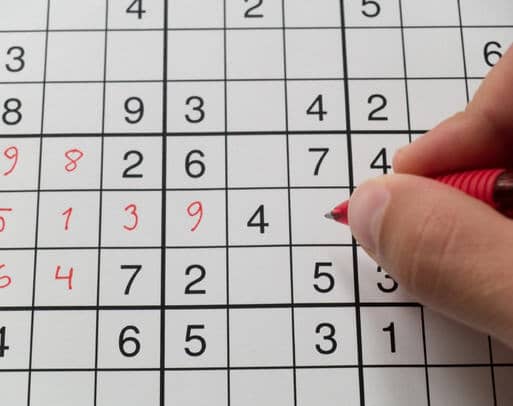
Have you heard of Sudoku, OkiDoku and KenKen?They are fun math grid puzzles and are an excellent way to improve kids’ math problem-solving and algebra skills.
Now that summer is here, why not set a goal for your kids to complete a certain number of these puzzles every week. You could think of it as “15 minutes of reading and a math puzzle a day, will keep the summer brain drain at bay”.
Why math puzzles?
Why are educators seeing value in math puzzles for kids? What exactly is it they’re learning? Here’s what we have found out:
Motivation to learn: as puzzles are games, many kids have a different attitude to this type of math learning and many enjoy solving these puzzles. Kids who learn to enjoy solving puzzles have proven to show a more positive attitude towards other forms of math as well.
Puzzles provide educational value: along with teaching persistence in problem solving, math puzzles also help kids with reflective learning and algebra techniques.
Improvement in student performance: it makes sense, practice, practice, practice – makes perfect. Letting kids practice their skills with puzzles encourages them to master concepts that they can then apply to other areas of math, such as math word problems. Educators have come to the conclusion that math grid puzzles are effective in cultivating students’ interest in math, in improving their problem-solving, reflective learning and algebra skills.
How each puzzle works
There are lots of different math grid puzzles, but there seems to be three predominant ones that have gained the most popularity. They are Sudoku, OkiDoku and KenKen. Here’s how they work.
Sudoku
The objective is to fill a 9x9 grid with digits that differ in each row and each column, so that only one of the digits 1-9 are represented on each row and each column, AND that each 3x3 grid contains all the digits 1-9.
There are versions for kids that cover smaller grids and, therefore, less numbers. Here’s an example of a 6x6 grid for kids. Can you solve it?

KenKen
As in Sudoku, the goal of each puzzle is to fill a grid with digits –– 1 through 4 for a 4×4 grid, 1 through 5 for a 5×5, etc. –– so that no digit appears more than once in any row or any column. Grids range in size from 3×3 to 9×9.
KenKen grids are outlined with heavily outlined groups of cells, called cages, and in the top left corner of each cage is the desired sum you’ll need to reach for each of those cages using the numbers available to you. The complicating factor is that you’ll need to choose your numbers wisely as you cannot have the same number on any one row or column. For example, if the sum is 5+, you can reach it by adding 4+1 or 2+3 (or vice versa), you’ll need to look across at the other equations to see which one to choose for this one equation.
OkiDoku
OkiDoku takes KenKen to a new level. The purpose of both puzzles is to fill a square with numbers in such a way that the numbers do not repeat in a given row or column. In a 3X3 KenKen the numbers are 1,2,3 but in a 3X3 OkiDoku puzzles the numbers can be 4,5,7 or 4.5, 3.5 and 8. In OkiDoku the player must figure out first what are the numbers in that puzzle.
Where do you get started?
You are chomping at the bit to get started – I can tell. Here are some of the sites we recommend for your kids to get started with these math grid puzzles. Happy solving!
Sudoku for kids
KenKen for kids
New York Times – start with the easy option
OkiDoku for Kids

